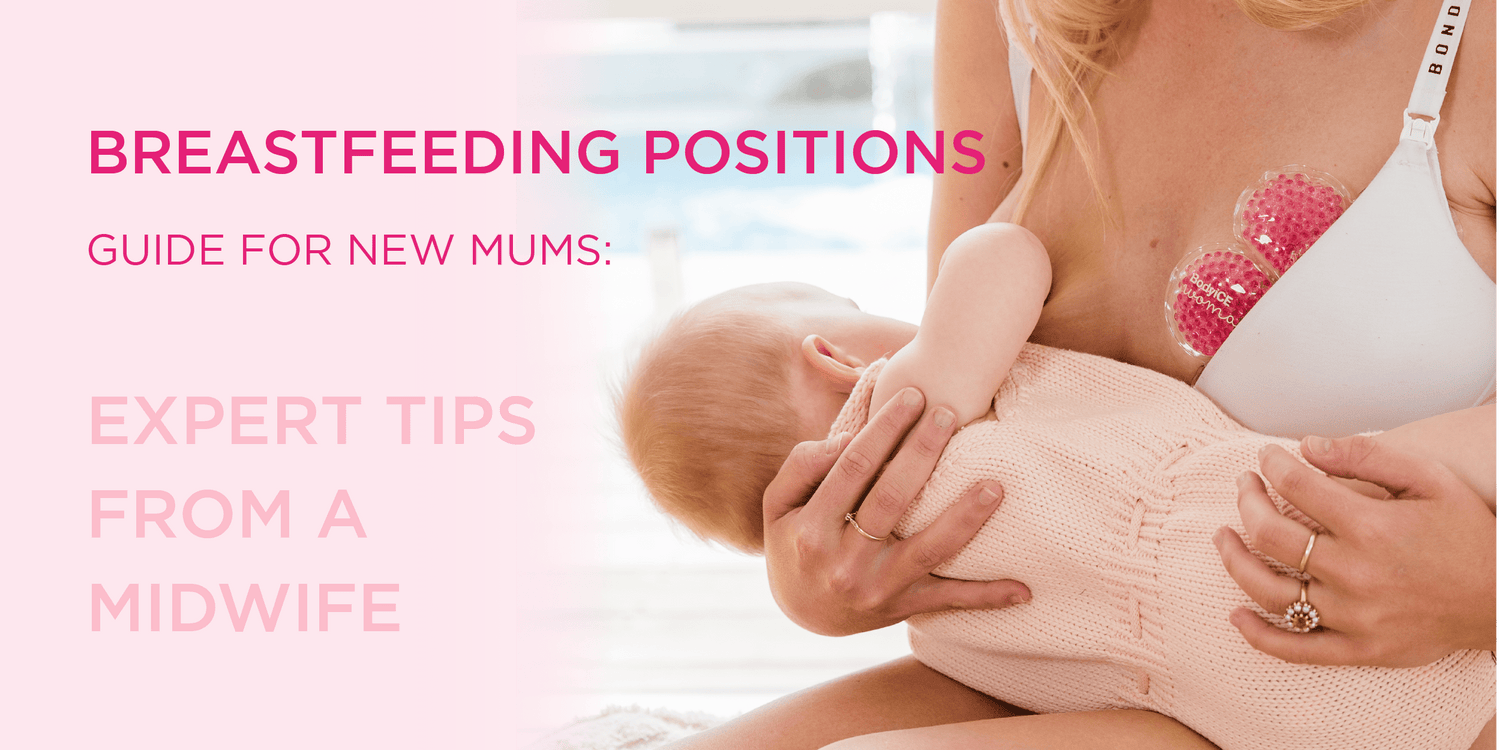Breastfeed In Comfort
As a new mum, one of the most beautiful and essential experiences you'll have with your baby is breastfeeding. It's a unique bond that nourishes your little one while providing numerous benefits for both of you. Understanding the different breastfeeding positions and finding what works best for you and your baby can make the journey smoother and more enjoyable.
Ultimately, breastfeed in a position that is comfortable for you and also works for your baby. Ensuring at all times that bub has a good attachment at the breast; their head, neck and spine are aligned, and they have a wide latch with their lips flanged outwards.
Before starting a feed, it is recommended you do skin-to-skin with your baby (especially in the early days). Have bub on your chest, tummy on tummy (between your breasts) this will allow them to orientate and get themselves ready for a feed. Your baby should nuzzle in and make his/her way to the breast when they are ready. You can also pop on your BodyICE Woman Breast pads - heat can be a great way to soften the breast and encourage milk flow. Always have a big drink bottle close by when you are breastfeeding, as it is thirsty work making breastmilk for your baby.
The five most common breastfeeding positions are outlined below to try with your little one, ask your midwife or lactation consultant for assistance if needed.
The Cradle Hold:

This is one of the traditional breastfeeding positions most mums generally try first. This position is easiest when you are sitting upright in a chair or supported in bed. This hold gets its name as you are cradling your baby in your arm, with their head sitting in the bend of your elbow. Bub is lying across the front of you, their tummy on your tummy and their nose lined up with opposite your nipple. If bub is on the left breast your left arm is the one supporting them with their lower arm resting under your breast. The cradle and the cross-cradle positions are very similar, it just depends which arm you are using to support bub.
Cross-Cradle Hold:

The Cross-Cradle Hold is similar to the cradle hold except it is the opposite arm supporting your baby. With bub in the same position as described above, this time if bub is on the left breast your right hand and arm is coming across your body and supporting bub’s head and body. This position can be best to try if you need the other hand free to use for shaping the nipple or attachment. Cradle and cross-cradle positions are most commonly learnt first as they are effective and most convenient in public.
The Football Hold:

This hold is when you have your baby’s body tucked around your side instead of across your front, like the above positions. If bub is attached to the right breast, their head will be at the breast supported by your right hand and his/her body will be around the right side of your body and their feet towards your back. Line their nose up with the nipple and bring them close when they open their mouth wide. Using the football hold when breastfeeding is recommended for mamas with large breasts, especially after the milk has come in when they are full. This position can be comfortable after a C-section to avoid bub laying on your tummy with the wound, and is also used for those mamas tandem feeding twins or a newborn and a toddler.
Side Lying Position:

is a great position that is comfortable at home, especially for night feeds, but not as convenient when you are out. For this position, you are simply lying down on your side in the middle of the bed with bub on their side close to you, tummy to tummy and their nose opposite to your nipple. Rest your arm above your baby’s head, do not rest bub on your arm or a pillow. Most babies latch easily in this position, and is fantastic in the early days when sitting upright may be uncomfortable on your perineum or wound. An overall relaxing position to breastfeed in.
Lying Back Position:

or in a reclined position can be referred to as biological nurturing. This is where you are lying back about 45 degrees on a couch or bed, supported by pillows. Bub is lying downwards, often to the side you are feeding on, with their tummy facing down on your tummy. Great position to use, which allows bub to make their own way to the breast, mums also find this position easy and comfortable. A reclined position is recommended to use when you have a fast letdown, as laying backwards helps to slow your let down allowing bub to cope better with their suck, swallow & breath rhythm.
For added comfort and support during breastfeeding, we recommend using our BodyICE Woman Breast Pads. The gentle heat they provide can help soften the breast and encourage milk flow, making feeding sessions more comfortable for you and your baby.

Additionally, consider using our Reusable Nursing Pads, which are soft, absorbent, and eco-friendly. They offer excellent leak protection and are a sustainable alternative to disposable pads.

Incorporating these various breastfeeding positions into your routine can make feeding time more comfortable and enjoyable for both you and your baby. Embrace the journey of motherhood, and savour the precious moments shared during breastfeeding, building a strong and loving connection with your little one.
This blog is written by midwife Aliza Carr from Bumpnbub. This blog is general advice only and does not replace the need for specialist advice.





Leave a comment
All comments are moderated before being published.
This site is protected by hCaptcha and the hCaptcha Privacy Policy and Terms of Service apply.